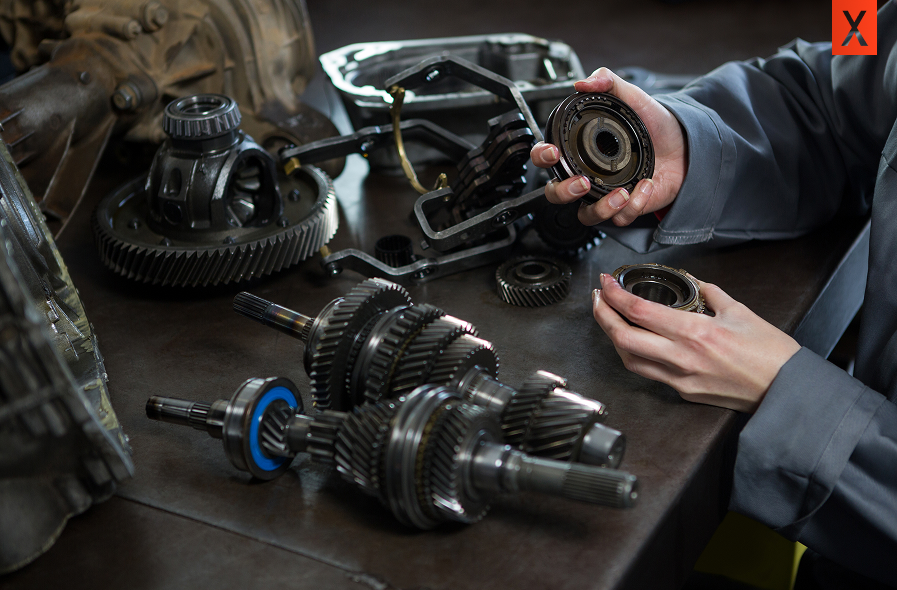When repairing your car, the question of quality vs. cost has always been an important one. Usually, you will have an option of either selecting OEM for the best quality or aftermarket parts to reduce repair costs. Your choice will affect your repair costs, your car’s reliability , and your safety on the road.
This article explains the key differences and considerations so you can make the right decision for your car and budget.
Highlights
This blog reflects on:
- Difference between OEM and Aftermarket parts
- How the choice of car parts impacts safety and cost
- The role of insurance and warranty in repairs
What is the difference between OEM and Aftermarket Car Parts
The manufacturing and supply chain of car parts are essential indicators of their quality and reliability. Knowing the difference will help you choose the right option.
Get Your Car Looking New Again!
Our skilled team brings your damaged car body back to its original condition expertly.
OEM - Original Equipment Manufacturer Parts
OEM parts are the genuine parts made by the same manufacturer that built your car. They are sold through dealerships or authorised suppliers and match the original factory specifications. These parts are direct bolt-on replacements built to the same standards as the factory parts.
They usually include a warranty and cost more than many aftermarket options.
Aftermarket Car Parts
Aftermarket parts are made by third-party companies.They cost less and are easy to find. They offer a wide variety, from premium performance upgrades to basic options. The quality varies from company to company. They are sold under different packaging or sometimes no brand at all.
There are some counterfeit aftermarket auto parts available in the market. These are low quality replicas that do not meet the manufacturer’s standard and can compromise your safety.

Fit of OEM and Aftermarket Parts
The match will always be a precise fit since OEM parts are the factory original parts and they are the exact copies of the original part. They are also known as the “Genuine” parts. Aftermarket parts can fit just as well if they are sourced from a reputable brand but the lower grade parts might need some minor adjustments.
Safety Considerations
OEM parts are the safest option for car repairs. They are manufactured under extensive quality control standards, which limit the risk of unexpected failure. Always choose OEM parts for critical components such as the brakes, air bags, and engine parts.
Aftermarket parts could be unpredictable as they are not tested properly under the same stress load as the OEM Parts. Generally the aftermarkets are suitable for non safety items where the affordability and frequent replacements are needed like air filters, light bulbs, etc
Cost of Car Parts
OEM parts: The cost of Original Equipment Manufacturer (OEM) car parts varies by part and vehicle model. The specific design, quality, and manufacturer branding of OEM parts add to their sales price.
Aftermarket parts: Aftermarket parts are generally less expensive and easily available in the market. Aftermarket parts have a variety of manufacturers and the price and reliability varies by quality.
Book Your Repair Today!
Your car deserves the best care. Book your car body repair now and enjoy fast, reliable service.
Reliability
OEM parts. These parts follow strict factory standards of the car manufacturer, ensuring consistent quality and dependable performance. OEM parts minimise the repeat repairs and help maintain the vehicle’s long-term reliability.
Aftermarket Parts: Aftermarket parts are generally considered less reliable because of a lack of clear manufacturing standards. Some of the available options are high-quality components that perform well. However, others wear out quickly resulting in repeated repairs.
You need to do your research and find a trusted aftermarket car parts brand which has a good reputation for quality and providing the OEM standard parts with warranty.
Also Read: Reliable Cars in the UK That Don’t Require Frequent Repairs
Need Car Body Repair?
Get a free assessment and quote from our certified technicians today!
Bottom Line
When replacing critical safety components (brakes, airbags, steering, suspension), it is highly recommended to choose OEM parts. These parts meet the carmaker’s standards, ensure reliability, and keep your insurance and warranty valid.
On the other hand, aftermarket parts are more budget-friendly and readily available through local repair shops. They are reliable if bought from trusted suppliers. You can choose these to replace filters, bulbs, wiper blades, and other non-critical parts. However, it is always important to choose a trusted car repair shop to get the repair done.
Frequently Asked Questions
Not always. OEM parts are usually hard to source for discontinued or older models. Therefore, aftermarket parts are the more practical option for older cars.
Not directly, but insurers often prefer aftermarket parts to control costs. OEM parts usually require additional policy coverage or higher premiums.
Yes, the Ministry of Transport in the UK passes aftermarket parts in their mandatory annual roadworthiness and safety check for vehicles if they do not compromise safety systems.
Find the Perfect Fit Now
Are you unsure which option is best? Our team at AVX car body repair explains everything clearly and recommends what repairs work for your car and wallet.



